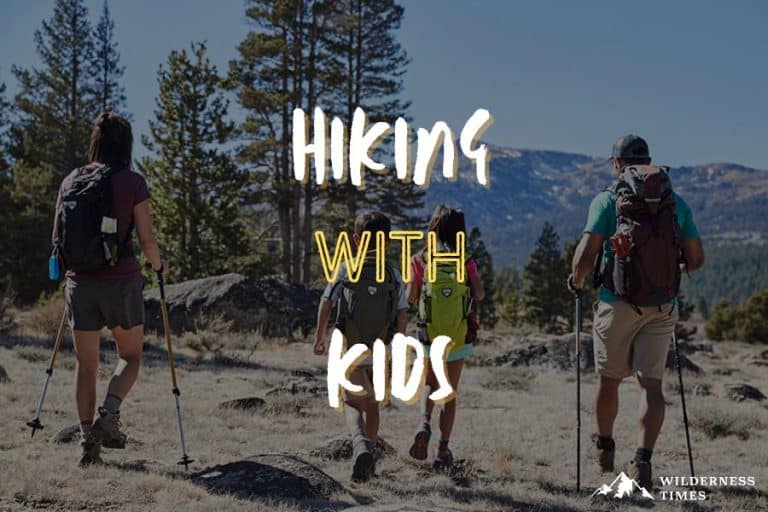Hiking with kids is something all parents should consider.
The only way to continue to preserve public lands and hiking trails is to get future generations into it.
When you take your kids hiking, you’re opening their world to the enjoyment of nature.
But hiking with kids isn’t always an easy task. If the adventure lacks adventure, it’s just a boring walk in the woods.
Once you add adventure through hiking and add some reliable fun elements to it, continuing their interest in hiking won’t be so difficult.
Let’s dive deep into how we can ensure that we provide the best possible experience for our kids every time we hit the trail as a family.
Tips About Preparing For A Hike With Kids
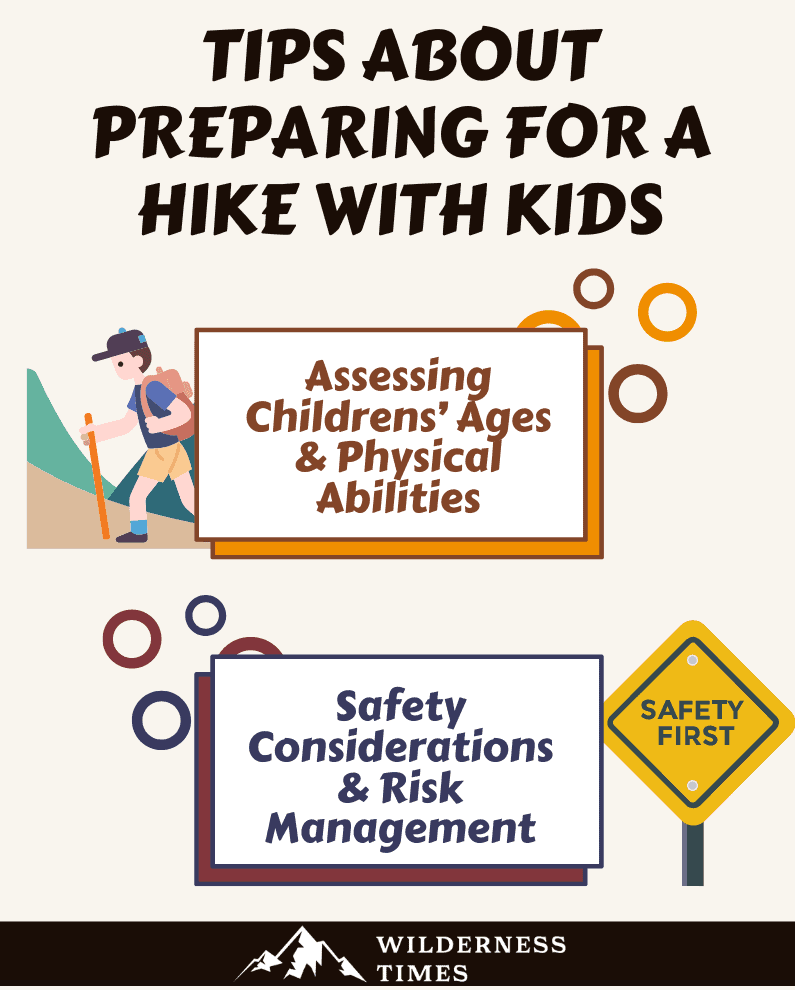
Being prepared for hiking is the number one rule for most of us.
But ensuring that you’re prepared for hiking with kids is even more essential.
Assessing Children’s Ages & Physical Abilities
You should always consider the child’s age and ability to hike difficult trails.
A toddler just learning to walk shouldn’t be hiking a difficult trail with high elevation gain and long distances.
Trail difficulty and the child’s physical abilities should always be considered when planning a hike.
Just putting them out on a rugged trail without considering their hiking ability might harm them.
Safety Considerations & Risk Management
Consider the risks of the hiking trail you’ll take your child to. What sort of safety hazards will be present?
Things to consider include dangerous animals, hazardous weather conditions, and difficult trail obstacles.
Children are going to react slower and not be able to gain energy like adults can.
You must keep that in mind during the planning phase.
Essential Gear For Hiking With Kids
The best way to get kids into hiking is to give them some independence.
Let them take their own backpack if they can do so. But don’t overpack it.
Let them carry some essential stuff, but keep the heavier items for your backpack.
Kids need to have plenty of hydration, snacks for fuel, a first aid kit, emergency equipment, and lights.
Everything most adults would carry for emergencies or survival should also be in a kid’s pack.
Additional items may depend on their age and needs.
For example, you could bring some activity books, nature reference cards, or toys.
Just focus on items that will keep them occupied during the most boring sections of the trail.
Proper Footwear & Clothing

Ensuring your child is comfortable, and pain-free is important. Don’t let them get on the trail wearing sandals or Crocs.
Those shoes are not made for hiking and will likely cause blisters and discomfort, ruining any chance to get them to enjoy hiking.
Their clothing should keep them cool during warm or cold hikes.
Proper fitting hiking boots or shoes are best, even if it means you’ll need to get new ones as the child grows.
Sun Protection & Bug Repellent

Sun protection and bug repellent are important for the little ones.
Typically, kids’ skin tends to burn faster than adults’ when exposed to the sun for long periods of time.
The sun can still reach your skin even when hiking in the woods.
Make sure you apply plenty of sun protection on your kids.
Bugs can also ruin a hiking trip fast if they’re biting you.
It’s even worse for a kid, so make sure they apply bug spray and reapply when necessary.
Backpacks & Daypacks For Kids

It’s best to get hiking-specific backpacks made for children if you plan to allow your child to wear their own pack.
You should let them wear a pack but remember to prevent it from being too heavy.
You’re a strong adult who can carry a big load; your child is probably not the same.
But don’t choose regular backpacks that are not made for outdoor use.
Those might be uncomfortable to wear because they’re not made for such use.
Food, Water, & Snacks
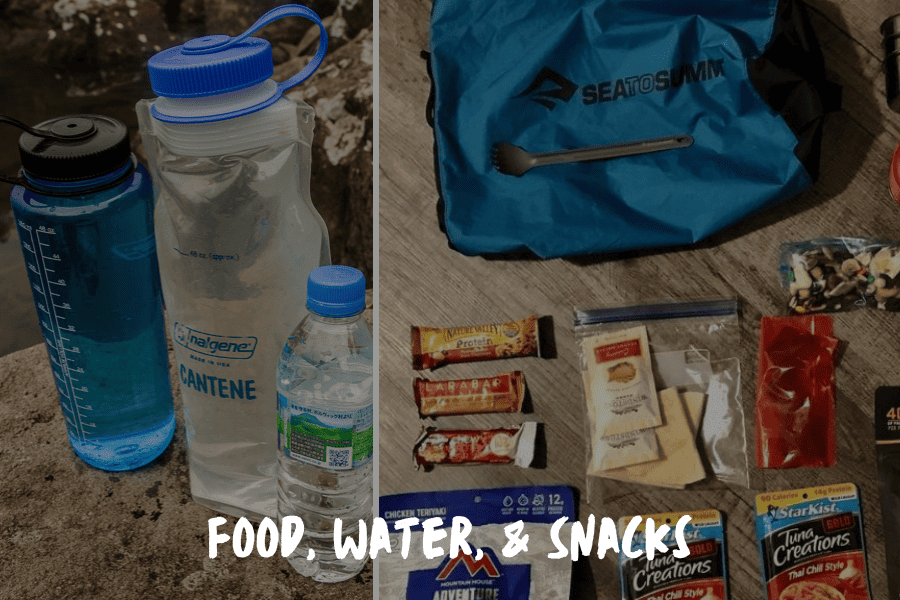
It’s important to bring plenty of food, water, and snacks for your child’s consumption.
Ensure you have enough food and water for both you and your kid for multiple days.
Even if you just plan to do a day hike, accidents can happen, and you might have to stay longer.
Bring food and snacks for your kid. They’re going to burn more energy than you will and at a lot quicker rate.
They’ll need to hydrate and fuel more frequently than you will typically need to.
Ensure you bring healthy food and snacks that promote good energy renewal.
First Aid Kit For Kids
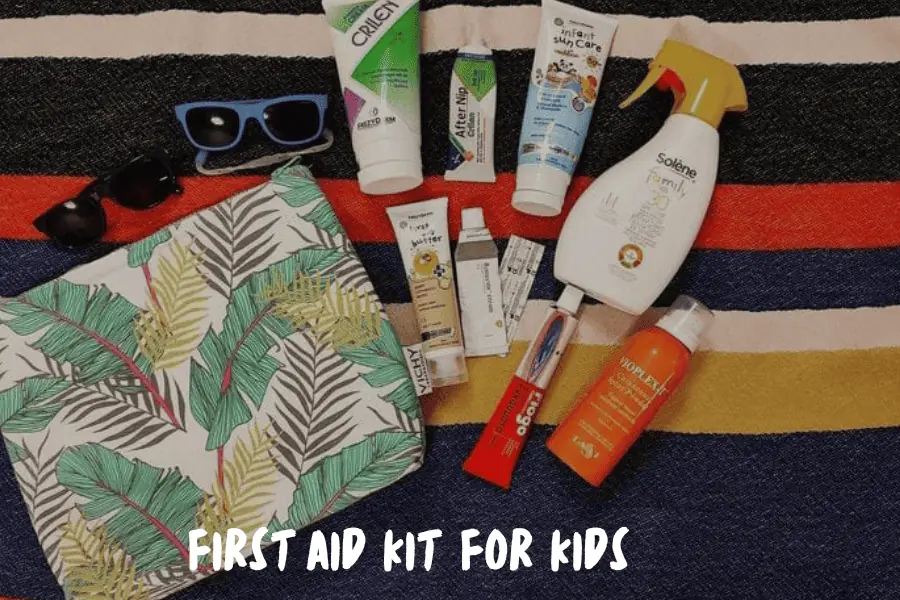
Consider buying a kid-friendly first aid kit.
Even if you have to use anything from it, it should help the child feel safe and comfortable.
For example, if a child gets a blister or scratch from falling, you could use band-aids with fun kid-friendly designs on them.
Maybe you can find some nature-themed ones to make it more fun.
Try to teach your child about the contents of their first aid kit so that they know how to use each item.
Giving them their own kit will help them feel independent and promote safety at a young age.
They will need those skills later in life as an adult both on and off the hiking trails.
Choosing Kid-Friendly Hiking Trails
Not every trail is equal when it comes to hiking with kids.
You need to select trails that will keep their attention so that they focus on adventure and less on the work required to hike.
Researching & Selecting Suitable Trails
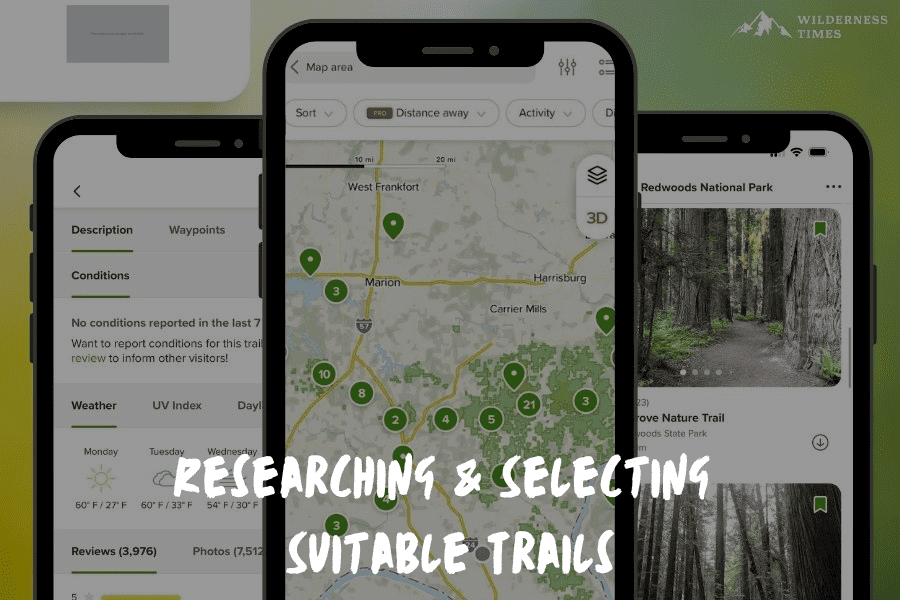
You want to research every trail you plan to take a child hiking on.
The best way to research is to find blog posts and trail reviews written by parents and caregivers of children.
These reviews are going to be the most detailed and the most aimed at people with kids.
Of course, you should also check normal sources that you typically research for yourself as well.
Keep an eye on reviews and descriptions that note that there is much to see, signage to read off to kids, and activities to make the hike fun.
One of our favorite hiking apps is AllTrails.
Not only are their maps very accurate and easy to navigate, but the real hiking reviews on the app are extremely helpful in determining how fun a trail is going to be.
Trail Length & Difficulty Considerations
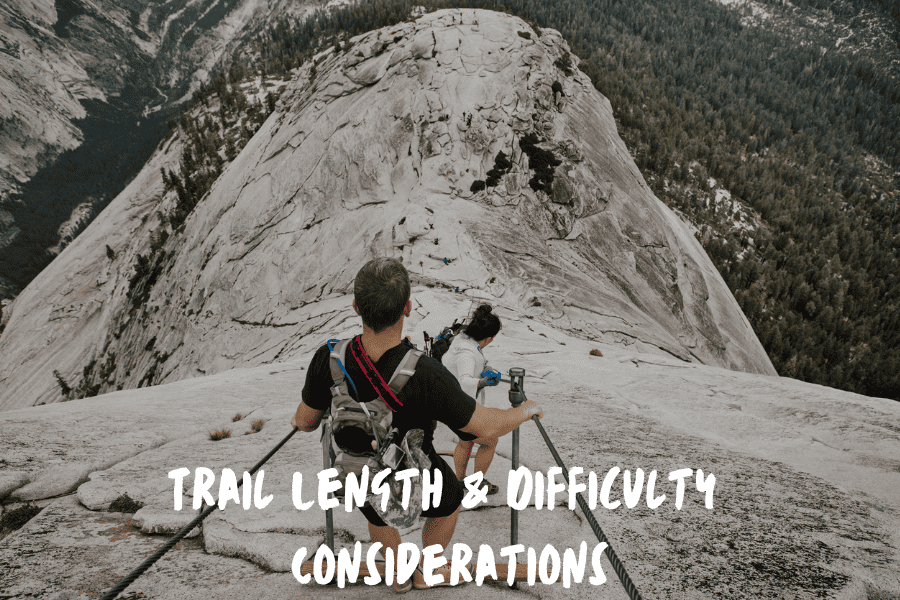
Be mindful that while children appear to have more energy than adults, this isn’t true.
A kid doesn’t have more energy than an in-shape adult.
Because they’re small, they’ll burn through their energy a lot quicker than we will.
So, make sure you choose trail lengths and difficulty ratings very carefully.
If you choose a trail that is too difficult, they might get halfway through it all and then wear down.
Family-Friendly Amenities & Facilities
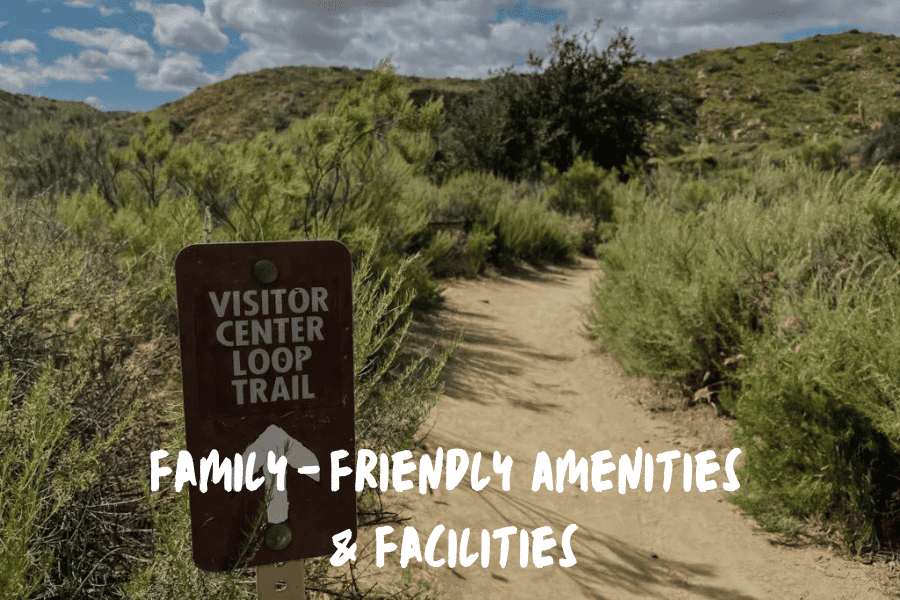
It’s also a good idea to look for trails that cater more to family-friendly patrons.
Trails next to visitor centers, for example, are typically friendlier for all ages.
The visitor center tends to have activities and information geared at children and parents to learn together.
Look for trails with clean working restrooms, playgrounds, and picnic areas to make a full day out of it.
Again, the best sources will be reviews by parents and caregivers who’ve already visited the area.
Accessibility & Stroller-Friendly Trails
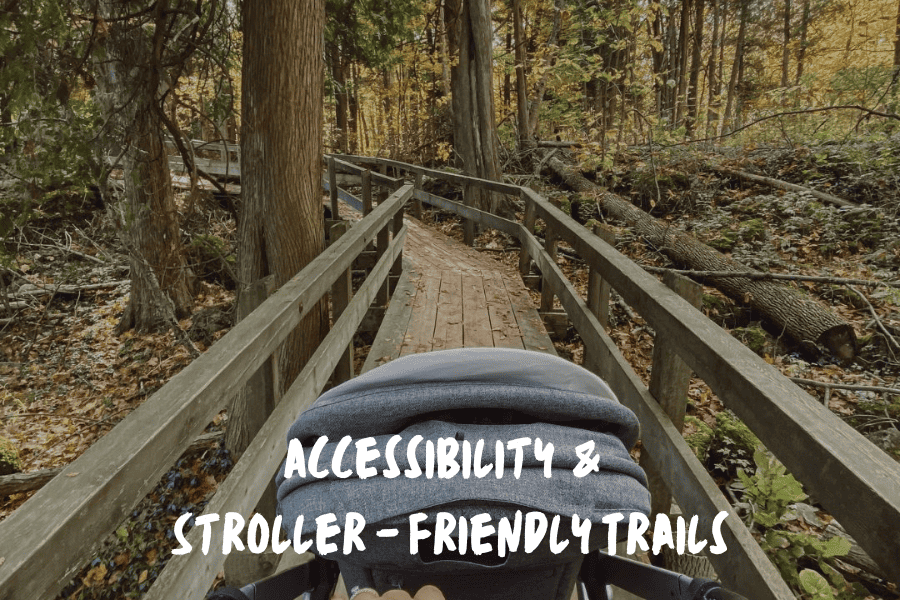
For kids with special needs or families with really young ones, you should look for accessibility-friendly trails.
Many of these trails will be marked as ADA compliant, which stands for ‘American Disability Act’.
This means they’re maintained so they can be used by anyone with a disability.
They’re typically hard-surfaced and easy to use by all people. They make for perfect stroller-friendly hiking trails as well.
Most of these trails will be found in public lands maintained by city park districts and state parks.
Safety Guidelines & Preparation
Safety is more important than ever when hiking with kids.
The last thing you want to do is put a child in a situation where they could be harmed or their safety jeopardized.
Setting Expectations & Educating Kids about Hiking Safety
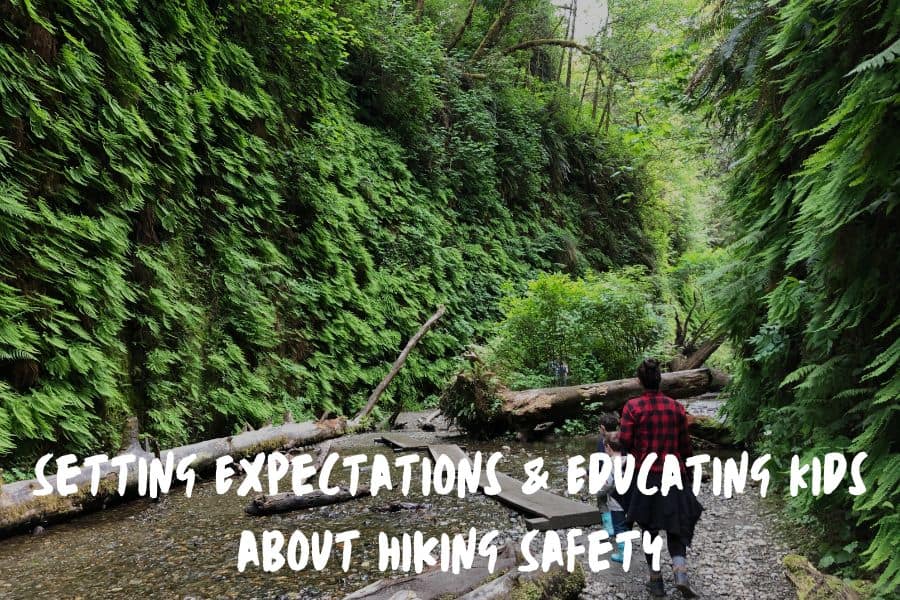
It helps to educate kids about the hazards of hiking and how to be safe.
Children will only learn about something when we take the time to teach them.
Before the hike, you can explain safety rules to them so they know what to look for.
Try to remind them of the safety rules during the hike.
Stop and show them safety hazards and what to do to avoid them.
Quiz them, ask them questions about what you’ve taught them, and coach them.
Proper Trail Etiquette & Respect for Nature
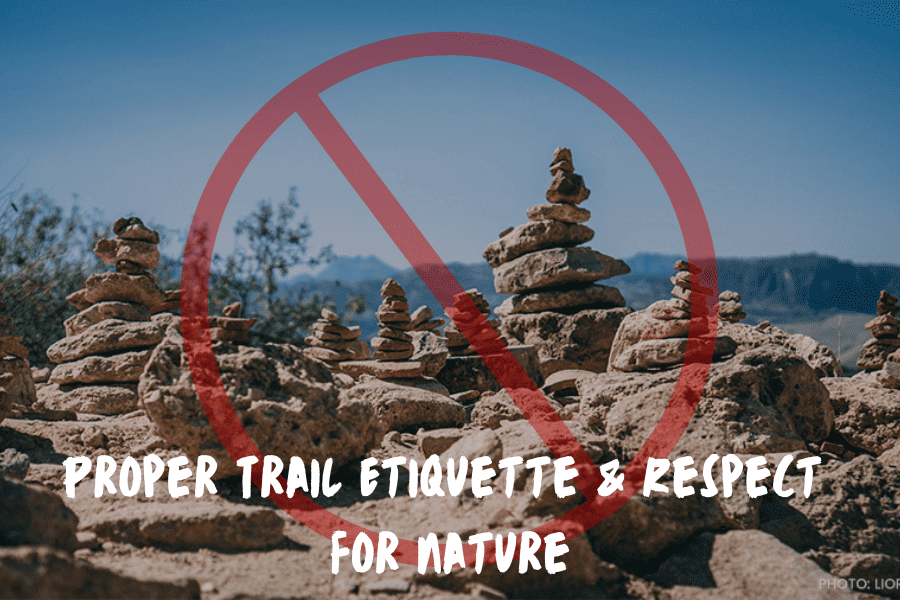
It’s always best to teach kids how to be good stewards of public lands when it’s early in their hiking experiences.
Teach them the unofficial rules of the trail. Teach them how to share the trail and yield when it is best to yield.
Show them the importance of leaving no trace of their presence.
For example, explain why they shouldn’t build rock stacks because of the ecological impact that dwarfs any other reason for them.
Show them why we must preserve the most precious things in nature so that their generation and generations can continue to enjoy nature as we did.
Identifying & Avoiding Hazards On The Trail

It’s good to run through the hazards that will be present on the trail.
These can be a multitude of things pending on where you are.
Explain about hazardous animals such as bears, wolves, and venomous snakes.
Talk about safety around ticks and biting bugs.
Point out what poison ivy and other poisonous plants look like and how to avoid making contact with them.
Talk about being careful around wet areas and edges of cliffs.
Consider all the hazards on a trail and teach children about them so that they know what to avoid at a young age.
Also see: Hiking Injuries (Common Hiking Injuries and How to Treat Them)
Teaching Children Basic Navigation & Orientation Skills

If you know how to read a map, use a compass, and navigate using a GPS or phone application – try teaching your little one how to do that, too.
Imagine a scenario where you become injured and unresponsive. Your child could be alone and scared.
But if they knew something about navigating, they could at least try to make their way to safety and to get you the help you need.
Consider taking a class on navigation and bring your kid with you if they’re capable of learning the trade of land navigation.
Managing Temperature & Weather Conditions

Ensure you check the weather conditions for the day and consider your child’s safety.
You might be able to hike on really hot or really cold days, but can your kid do the same?
You’ve conditioned yourself to be able to hike in the elements. Is your child conditioned to do the same?
You should also ensure they dress for the weather and have the right gear with them in case the weather conditions change. Let them pick out their clothing and gear.
It’s fine to give them the independence of their own style but guide them on the items that will be best for the elements of the day.
Also see: Hiking at Night (How to Hike Safely in the Dark)
Engaging & Educating Kids On The Trail
To keep hiking fun for your kids, you must engage them while on the trail.
You need to keep them educated while focusing on various aspects of the hike; otherwise, boredom may follow.
Nature Exploration & Observation

Hiking should be an adventure for everyone of all ages. There are plenty of things to see for everyone.
Non-predatory wildlife and bugs are very fun for kids to find. Similarly, rare flora and fauna can be exciting for both kids and adults while hiking.
You can even look for old signs of settlements and waterfalls throughout the trail, especially if it is in a historically rich area.
There is a lot to see on the hiking trail. Everything you see allows you to teach your children about nature.
Bring some fun books with you to help aid you – adding a little extra weight to keep your kids happy is okay.
Wildlife Spotting & Identification
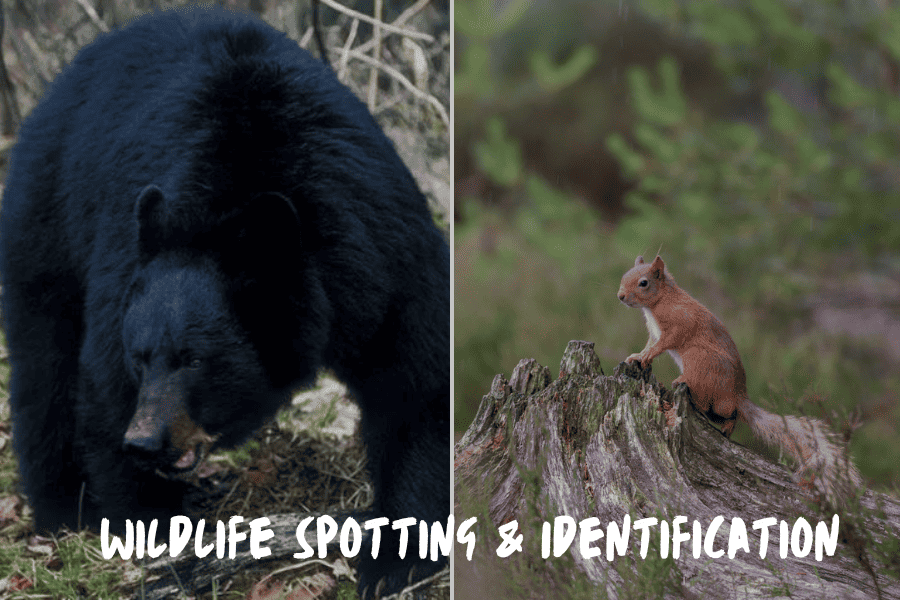
As I said before, look for various wildlife. Use reference books to identify the wildlife.
You can also include bugs and reptiles in this activity.
Show your child what things are, and then let them try to guess what the next thing is.
If they don’t know, let them look through the books to see what they find. Make hiking interactive for your little ones.
Geology, Botany, & Ecology Lessons

Hiking and nature create an ample opportunity for you to give science lessons to your children.
You can find easy activities to teach them on the Internet, too.
Who knows – you might be learning something new right next to your children.
This knowledge will stick with them, and once they get to a point in school to learn it, they’ll know more about it than most kids their age.
Interactive Games & Activities For Kids

Look for and purchase interactive games that are hiking-friendly.
This might include flashcards of certain elements within the nature of the hiking trail.
Make sure you choose games and activities that don’t impact other people’s hiking or violate the efforts of leaving no trace.
Journaling & Artistic Expression

Another great activity when hiking with kids is to allow them to journal their experiences.
They might do this by writing down what they hiked and what they saw.
Alternatively, the child could draw or paint pictures of their natural experience.
Writing and art have always been great ways to engage a child’s developing mind.
It’s healthy and helps them develop into more intelligent adults.
Snacks, Meals, & Hydration On The Trail
It is important to ensure that children are well-hydrated and fueled when enjoying a hike.
They’ll require more resources than most adults because they lack experience and size.
Nutritional Considerations For Kids

Packing enough hydration and fuel will keep your child hydrated and energized for the duration of the hiking trip is important.
Just like you, your child needs to constantly drink water and eat snacks or appropriate outdoor foods to stay healthy during the hike.
You should ensure that the food and hydration sources are graded as safe and healthy for kids.
Junk food shouldn’t be a part of your supplies aside from a small candy bar here and there for a treat.
Portable & Healthy Snack Ideas

Bring healthy snacks that are portable without a need for refrigeration.
Some good ideas include trail mix, sliced apples, veggie sticks, cheese sticks, energy bars, jerky, whole grain crackers, graham crackers, peanut butter wraps, squeezable fruit pouches, and plenty of water.
You could also add electrolyte powder to your water to add taste and give you and your child more energy.
Hydration Strategies & Water Safety
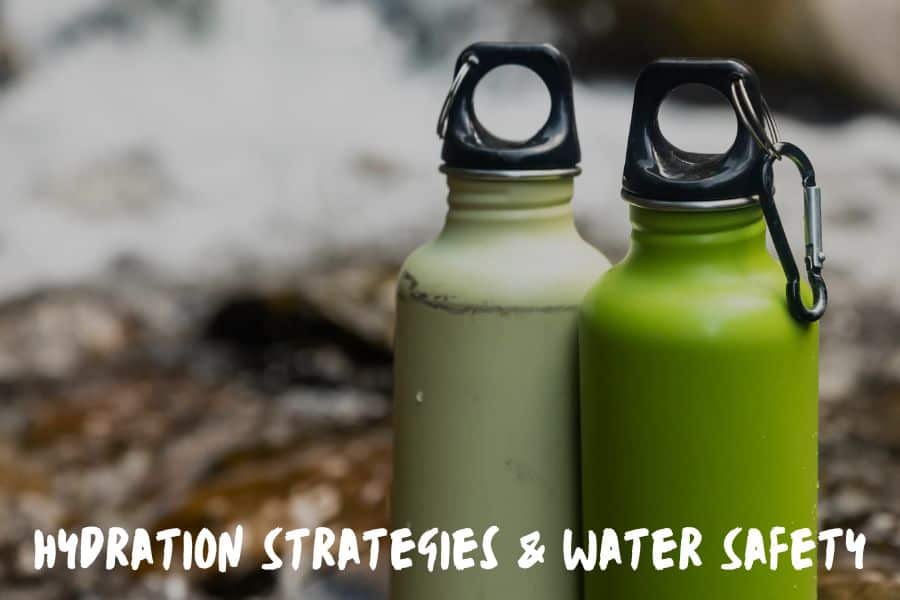
You and your child should be practicing good hydration and fueling strategies while on the hiking trail.
A good strategy is to eat and drink every half hour.
Take a handful of trail mix or eat a quarter of your energy bar.
Then wash it down with two or three big gulps of water.
Repeat this every 30 minutes or less on hotter days to stay hydrated and fueled.
You might even set your watch or phone to beep or vibrate every half hour as a reminder.
Picnic & Meal Planning Tips
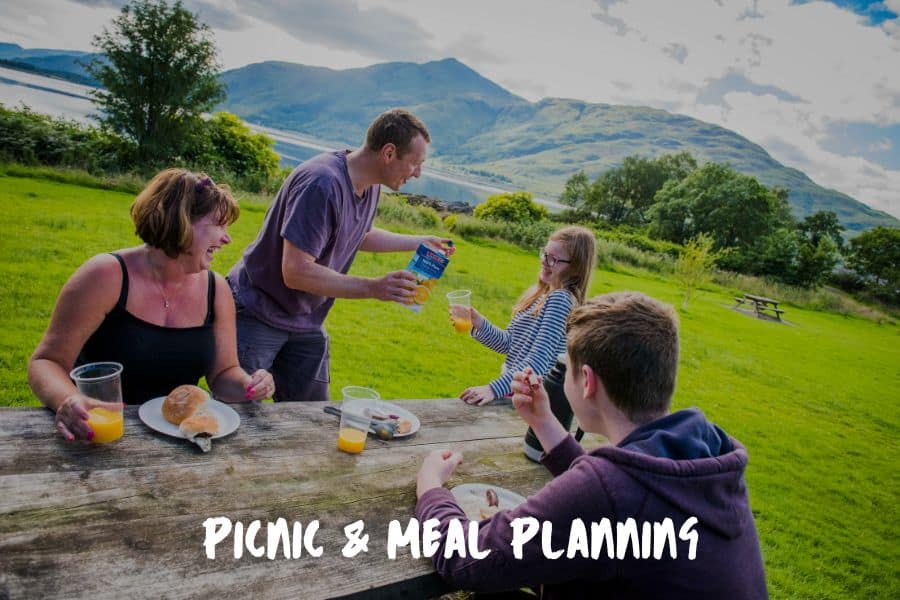
Consider bringing lunch with you on your hike. Freeze-dried food is a great option for this since it’s easy to pack and typically lightweight.
Find some meals you and your child will enjoy and eat at home.
If they’re winners, take them with you on your next hike. In the middle of the hike, sit in the shade and picnic.
FAQs
What Fun & Educational Activities Or Games Can I Incorporate Into My Kids’ Hiking Experience?
There are many different educational activities that you can include during your hike with kids.
You can identify different animals, bugs, flowers, plants, and mushrooms with reference books.
Or, you can incorporate cameras and teach about nature photography.
Another thing you can do is journal your hiking experience and keep track of everything you find.
There are many ways to provide education when hiking with kids.
Are There Any Particular Strategies For Motivating Reluctant Children To Embrace Hiking?
Geocaching is one activity that might engage a child’s attitude toward hiking.
This is where you use GPS coordinates and hits to find containers left in certain spots along hiking and biking trails.
Once you find a container, you take something from it and leave something (usually small toys and trinkets).
You also sign the log book showing when you found the cache.
There is also an app for your phone to log your geocaching experience.
Can I Bring A Baby Carrier Or Hiking Backpack For Infants Or Babies To Join The Hiking Adventure?
Yes. Many parents are starting their children hiking at such a young age that they aren’t even able to walk yet.
There are many specially designed backpacks made for carrying infants and smaller toddlers.
These allow you to bring your young children for an encounter in nature.
Extra precautions and planning should be made since the child is very young and vulnerable.
How Can I Teach My Kids About Respecting & Observing Animals In Their Natural Habitats?
One of my favorite things to do is teach kids about snakes. Most people fear snakes for reasons that are completely false and urban myths.
When hiking with kids and encountering a snake, you can show children what it is, how far of a distance to keep from it, and how to move around it safely.
You can also teach them the importance of respecting and not handling the snake.
Of course, you can insert any other animal in the place of the snake.
Final Thoughts
Getting kids out on the trail is important.
They are going to be the next generation that protects our public lands when we are no longer around to do it.
Give the best thing you can give to a child by taking them out for a hike with you.
Who knows – it might turn into that one thing you and your kid will always do together!
More on Hiking:


